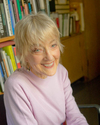- Winter 2020
Syllabus Description:
Musée Louis Vuitton in the Bois de Boulogne, Paris (aka: Fondation Louis Vuitton)
Arch457/AH491
Architecture: 20th c. and Beyond
Instructor: Clausen
Winter 2020
T/TH 1:30 - 2:20pm, rm 003, Art Building
Office hrs: Weds, 2 - 5pm, rm 222, Art Bldg, or by appt.
Office tel: 206-616-6751
email: mlc@uw.edu
Course requirements:
-weekly reading, lectures, discussion (participation expected; expect to be called on)
-two exams
-one paper 4-6 pgs, double-spaced typed, summarizing/ analyzing three essays. Due 25feb; see paper assignment below.
For students wanting to take the course for 5 rather than 3 credits, an additional 10-15 pg research paper is required. YOU WILL NEED TO SIGN UP FOR AN INDEPENDENT STUDY OR PROJECT TO DO THIS, AS IT IS NOT AUTOMATIC. BE SURE TO CHECK WITH INSTRUCTOR ON CHOICE OF PAPER TOPIC, which should be related to the class and approved by the instructor soon after the quarter begins. THESE RESEARCH PAPERS DUE TUES, 10mar. NO LATE PAPERS WITHOUT MEDICAL EXCUSE.
Evaluation: exams constitute two-thirds of the final grade; the paper, remaining third; class participation tips the scale.
Plagiarism: Plagiarism is defined as using in your own work the creations, ideas, words, inventions, or work of someone else without formally acknowledging them by means of quotation remarks, footnotes, bibliography, or other reference. If you have questions about what constitutes plagiarism, check with the instructor. Instances of plagiarism will be referred to the Vice Provost/Special Asst to the President for Student Relations, and will almost certainly lead to disciplinary action.
Disability Services Office: If you would like to request academic accommodations due to a disability, please contact the Disability Services Office, email: dso@uw.edu, 206-543-6450 (voice) / 206-543-6452 (TTY). Please provide the instructor a copy of your letter from Disability Services indicating you have a disability that requires assistance. Disability Resources for Students, UW Seattle Campus
Images:
Images used in lecture will be in PowerPoint format; after each class, Powerpoints will be posted online via Canvas for review as PDFs (Lecture Images link above). Many (though not all) of the slides used in class are accessible on the Web, in the Cities and Buildings Database, an online digital image database created at the University of Washington in 1996 and added to continuously since then. Many of the images were scanned at low resolution by today's standards. Nonetheless, they tend to be informative, albeit not as sharp as one would like. There are also, of course, other image-based websites that one can use as a source of images.
Required texts:
- Davies, Colin. A New History of Modern Architecture. Laurence King Publishing, UK, 2017
- Le Corbusier, Towards a New Architecture, 1927; reprinted 1974, 1976. (transla of Vers une Architecture, 1924); a better version is Le Corbusier. Toward An Architecture, Getty Research Institute, 2007, with intro by Jean-Louis Cohen and translation by John Goodman, which I recommend but is harder to find used. Either will work; Cohen is recommended.
- Robert Venturi. Complexity and Contradiction in Architecture, 1966; 2nd ed, 1977.
Recommended as supplemental texts and/or for comparison:
- Cohen, J-L. Future of Architecture Since 1889, 2012 [former course text; excellent, but dense]
- Mallgrave, Harry Francis. Modern Architectural Theory. A Historical Survey, 1673-1968, 2005
- Colquhoun, Alan. Modern Architecture. Oxford History of Art, 2002 (available as an ebook)
- Frampton, Kenneth. Modern Architecture: A Critical History, 3rd ed, 1992
Davies text is recently published, and chapts in it may not be exactly coordinated with lectures. He would like feedback on it, and has asked my opinion, so please pass on your thought on it to me. It reflects a British perspective versus the former text used in the course which was written from French point of view. Main text is supplemented by other readings, some required, most only recommended. Most are on reserve in the Architecture Library. Several recommended articles are on CANVAS. Note that chapts in text may not be coordinated with lectures. Reading assignments are uneven in length and complexity, and competition for reserve books may be keen, so plan ahead. Also, as the format of the class is informal, and the schedule of lectures may change. Best, thus, to attend class regularly.
Link to complete Syllabus with weekly schedule
NB: Comprehension of the lectures and cogency of the class discussions depends greatly on your having read the appropriate material before class. Please manage your time accordingly.
UW SAFE CAMPUS
Preventing violence is everyone's responsibility. If you're concerned, tell someone.
- Always call 911 if you or others may be in danger.
- Call 206-685-SAFE (7233) to report non-urgent threats of violence and for referrals to UW counseling and/or safety resources. TTY or VP callers, please call through your preferred relay service.
- Don't walk alone. Campus safety guards can walk with you on campus after dark. Call Husky NightWalk 206-685-WALK (9255).
- Stay connected in an emergency with UW Alert. Register your mobile number to receive instant notification of campus emergencies via text and voice messaging. Sign up online at www.washington.edu/alert



